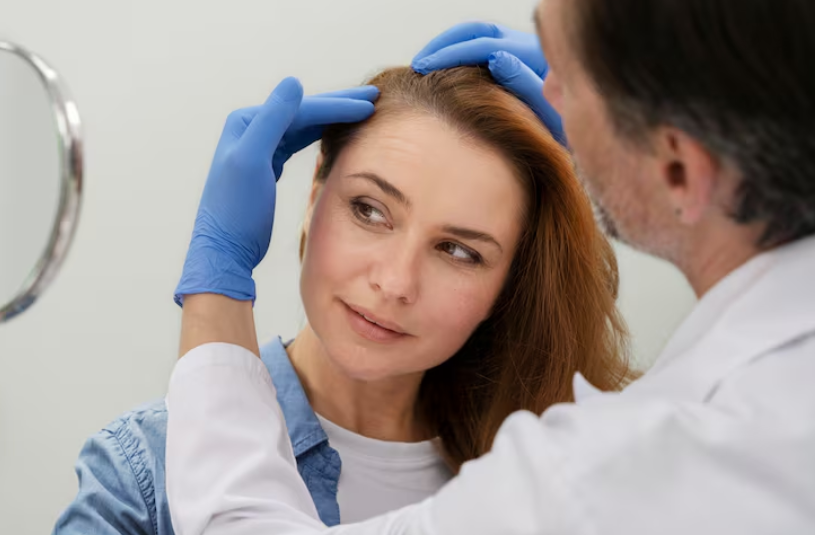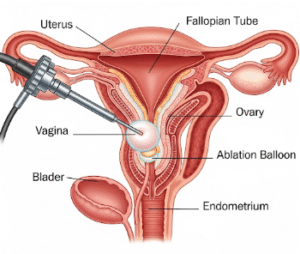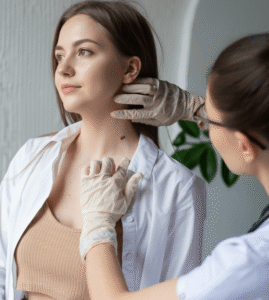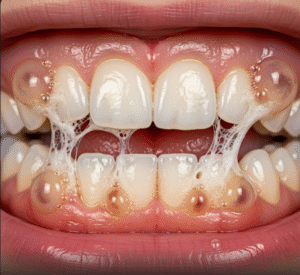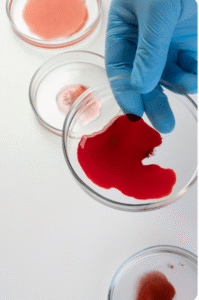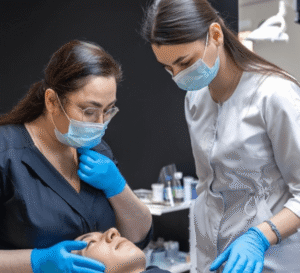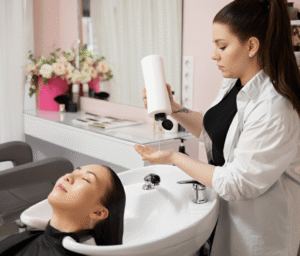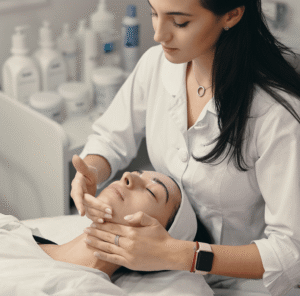What It Is
Forehead augmentation with implants is a cosmetic surgical procedure that enhances the contour and projection of the forehead using a customized implant, often made from silicone or Medpor. This procedure addresses flat, sloped, or uneven foreheads, creating a smoother, fuller, and more youthful contour.
In Korea, forehead implant surgery is highly advanced. Surgeons use 3D CT scans and computer simulations to design implants tailored to each patient’s facial proportions. This ensures natural, balanced outcomes that align with Korean aesthetic standards emphasizing soft curves and harmonious profiles.
Why It’s Done
Cosmetic Purposes:
- Improves a flat or sloped forehead for a more rounded, youthful appearance
- Enhances facial balance, especially when combined with nose or chin surgery
- Corrects asymmetry caused by congenital factors, trauma, or aging
- Popular among women seeking softer, more feminine facial contours
Corrective Purposes:
- Addresses irregularities following trauma or previous surgery
- Corrects congenital depressions or forehead deformities
Patient Considerations:
- Common among patients in their 20s–40s seeking profile refinement
- Best suited for individuals in good health with realistic expectations
- International patients often choose Korea due to surgical precision and artistry in implant design
Alternatives
- Fat Grafting: Natural, minimally invasive option; results vary with fat absorption
- Dermofat Graft: More stable than fat alone, but less dramatic than implants
- Fillers (Hyaluronic Acid): Temporary non-surgical enhancement (6–12 months)
- Custom 3D Implants: Advanced variation tailored more precisely than standard implants
Preparation
Before forehead implant surgery in Korea, patients undergo:
- Consultation: 3D facial analysis and implant design planning
- Imaging: CT scans to measure bone structure and forehead contour
- Health Screening: Blood tests and general medical review
- Pre-Operative Instructions: Avoid smoking, alcohol, and blood-thinning medications
- Fasting: Typically required for 6–8 hours before general anesthesia
How It’s Done
Type: Surgical procedure under general anesthesia
Duration: 1.5–3 hours
Procedure Steps:
- A hidden incision is made along the scalp or hairline
- The surgeon creates a pocket above the frontal bone
- A pre-shaped or custom-made implant is inserted and positioned precisely
- The implant is secured for stability and symmetry
- Incisions are closed with fine sutures hidden in the hairline
Hospitalization: Usually 1 night in the hospital for observation; some cases are outpatient
Recovery
- First Week: Swelling and tightness in the forehead; mild discomfort controlled with medication
- Downtime: Most patients resume work and social activities in 7–10 days
- Restrictions: Avoid strenuous activities for 3–4 weeks
- Final Results: Visible after swelling subsides, typically within 1–2 months
- Longevity: Implants provide permanent results
Possible Complications
- Swelling, bruising, or temporary numbness of the forehead or scalp
- Implant malposition or asymmetry (rare with 3D planning)
- Infection requiring implant removal (very rare)
- Visible contour irregularities if implant shifts
- Scar visibility (minimized with hidden incisions)
Treatment Options in Korea
Diagnosis
Korean clinics emphasize precision through:
- 3D CT Imaging for exact forehead measurements
- Computer Simulation to preview post-surgery results
- Multidisciplinary Consultation for patients combining multiple facial surgeries
Medical Treatments
For non-surgical patients:
- Temporary fillers for subtle contouring
- Fat grafting or dermofat grafts for moderate, natural enhancement
Surgical or Advanced Therapies
- Standard Forehead Implant Augmentation: Pre-shaped silicone or Medpor implant
- Custom 3D Implants: Tailored precisely to the patient’s forehead anatomy
- Hybrid Approaches: Implant combined with fat grafting for softer transitions
- Revision Surgery: For patients correcting asymmetry or unsatisfactory prior augmentation
Rehabilitation and Support
- Regular follow-ups to ensure implant stability and healing
- Scar care with laser or topical treatments if needed
- International patient services: multilingual staff, accommodation support, and recovery care programs

